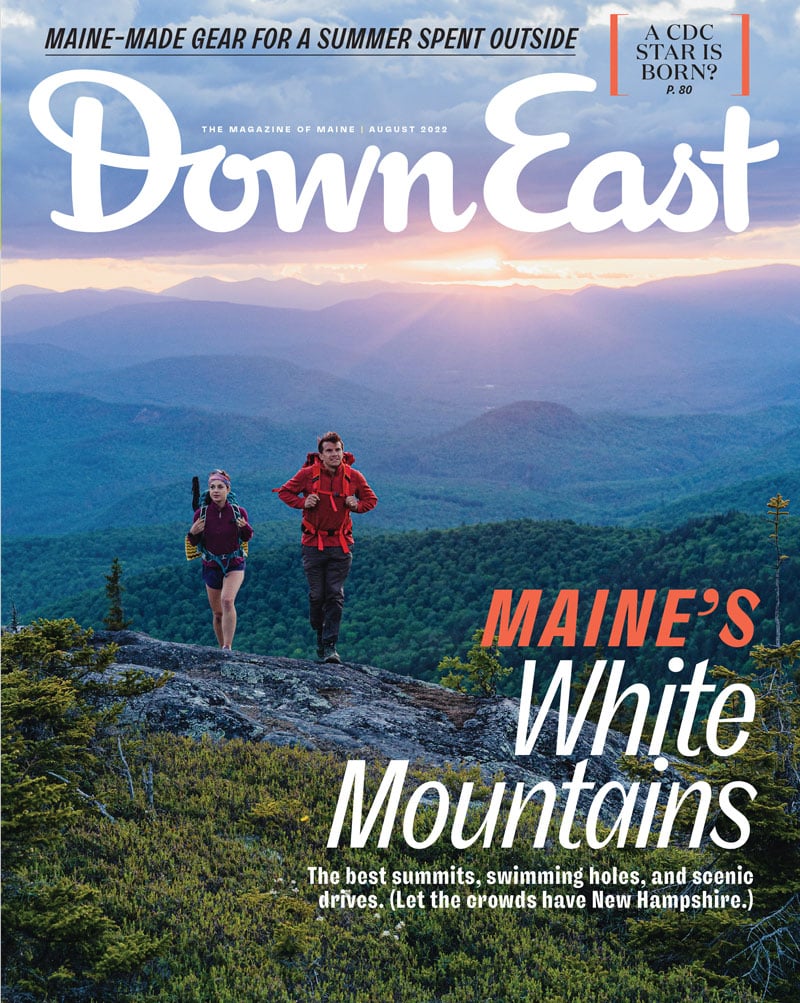By Will Grunewald
From our August 2022 issue
Afew years before the country’s oldest operating outdoors organization, the Appalachian Mountain Club, came into existence, and a few decades before the establishment of the White Mountain National Forest, a motley crew of Maine hikers banded together to form the White Mountain Club of Portland. Among their ranks: Bowdoin College zoology professor Edward Morse, artist and draftsman George Frederick Morse, artist Harrison Bird Brown, newspaperman Edward Elwell, Portland Gaslight Co. president Edward Daveis, and natural-history buff Joseph Thompson.
In 1873, those six men ventured together up Mount Carrigain, a 4,683-foot peak not far across the state line from Fryeburg, in what appears to have been the group’s inaugural outing. They didn’t make it to the top, chased off by a storm. “We never heard of it before and hope never to see it again,” Elwell, the journalist, later recorded. “It is none of your civilized mountains, the resort of tourists, made easy of ascent by foot-path, carriage ways and railroads, like your tame Mt. Washingtons.” He also penned an account of the hapless expedition in verse, cheekily dedicated to “those members of the White Mountain Club who survived the memorable expedition.” One characteristic stanza:
The brooks were dry, the way was steep,
We stumbled and we grumbled,
In mosses old we lost our hold,
And down the hill we tumbled.
Nevertheless, the White Mountain Club also had a serious side. On its excursions, members had barometers to help calculate elevation, they mapped routes, and they created accurate drawings of the mountains. Some of their fieldwork became useful to geologic surveyors, some of it to the growing number of Americans seeking out recreation in the great outdoors. At the time, people of means were escaping industrialized cities to rusticate in the fresh air, the Hudson River School of painters was romanticizing nature, and Congress and President Ulysses Grant had just designated Yellowstone as America’s first national park.
After just over a decade, though, the White Mountain Club of Portland petered out, its membership possibly joining the expanding ranks of the Appalachian Mountain Club. Still, the adventurous little outfit managed to leave its mark in the Whites. Vose Spur bears the name of Bowdoin engineering professor and club member George Vose, while Mount Anderson is the namesake of Portland & Ogdensburg Railway chief engineer and fellow club member John Anderson. Even that very first expedition, despite falling short of the Carrigain summit, found its way into the nomenclature: At one point, Daveis’s hat blew off and landed in a campfire. To this day, the bit of terrain where it happened is called Burnt Hat Ridge.




